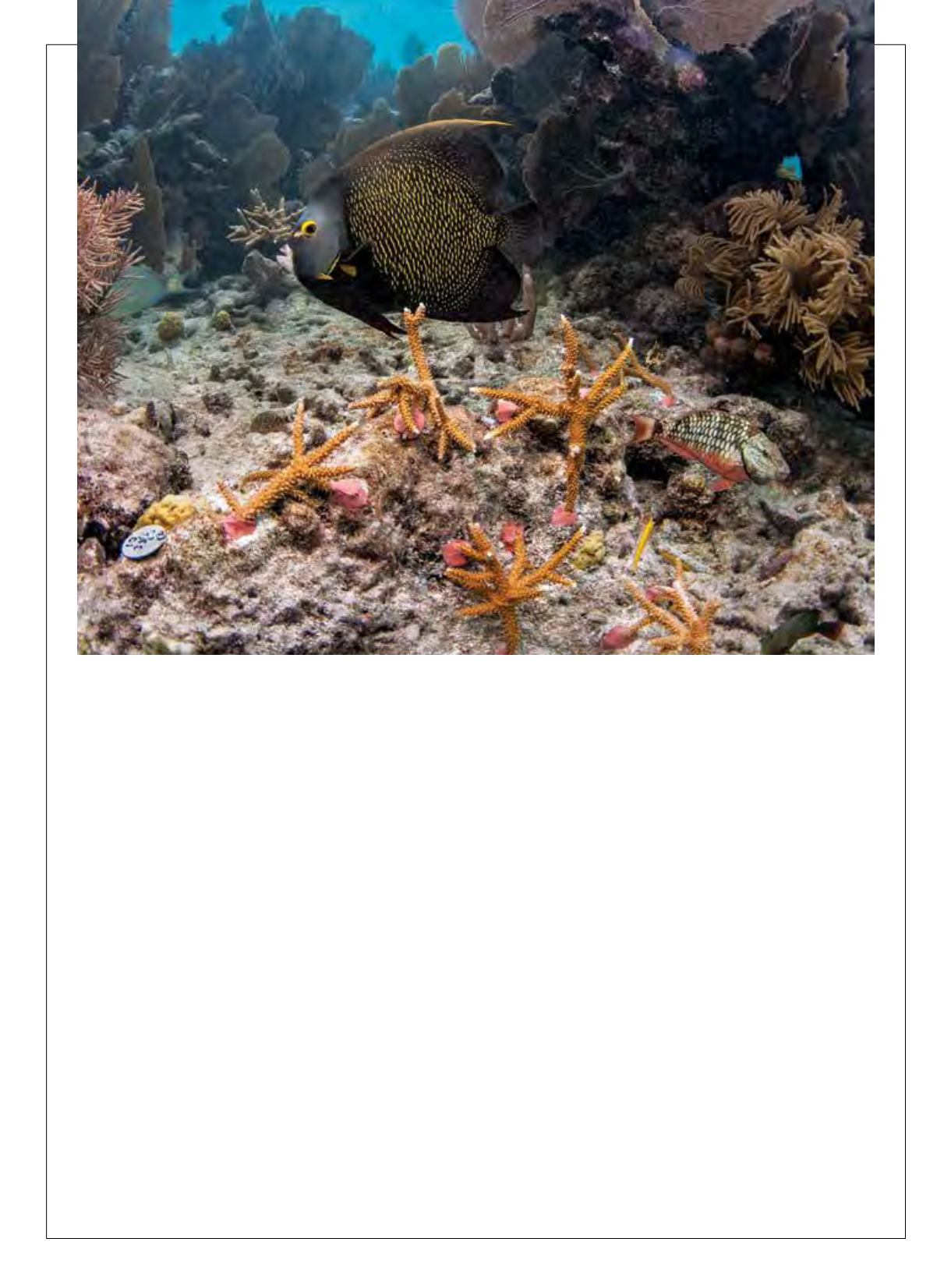
|
17
I
n December 2010 I jumped onto a boat with a group
from the Coral Restoration Foundation (CRF). I
had volunteered to photograph their seminar class
harvesting corals from the staghorn coral nursery
and planting the fledgling corals on Molasses Reef.
In those days CRF President Ken Nedimyer’s
techniques were changing and progressing rapidly. He
had recently shifted from mounting coral cuttings on
individual pedestals to hanging them from lines. The
coral trees that are the norm in coral nurseries today were
being deployed on a test basis at that time.
Every so often something triggers special people to
go beyond themselves and unceasingly pursue a path to
greatness, even if they can’t know the full impact of their
efforts at the moment. I believe Nedimyer is one of those
people. I felt it the first day I volunteered. Before he is done I
am convinced the entire ocean-aware community will know
about Nedimyer and the CRF. The work they are doing is
that important, and raising awareness of the deteriorating
condition of the world’s coral reefs is high on the priority lists
of ocean conservationists around the globe. The beauty of
this organization is that you can get involved as a diver and
plant corals to help CRF make a difference.
CRF has nurseries full of coral and big plans. Nedimyer, the
staff and several volunteers reiterated that point recently at
an Ocean Reef Conservation Association event in Key Largo,
Fla., CRF’s home waters. They transferred the first cultivated
corals from the Ocean Reef nursery to Carysfort Reef, and I
had the pleasure of tagging along. I was also fortunate to be
onboard when they planted the first cultivated elkhorn corals
on Molasses Reef. CRF is making great strides.
The organization’s proven techniques are easily
exportable to other reef-dependent cultures around
the world. There is more to restoration efforts than the
nurseries; identifying resilient genetic strains of coral is one
of the keys to success. CRF’s objective is to cultivate the
surviving strains gathered from depleted areas and nurture
them. Replanting them on the reef is a critical step in the
reef’s transition back to a productive ecosystem. Once the
coral is planted, grows, breeds and expands, the ecosystem-
building relationships begin to manifest. Coral restoration
is the linchpin for recreating an ecosystem.
Text and photos by Tim Grollimund
Coral Restoration Expands Internationally
A French angelfish (Pomacanthus paru)
swims amid staghorn corals recently planted
by the Coral Restoration Foundation.


